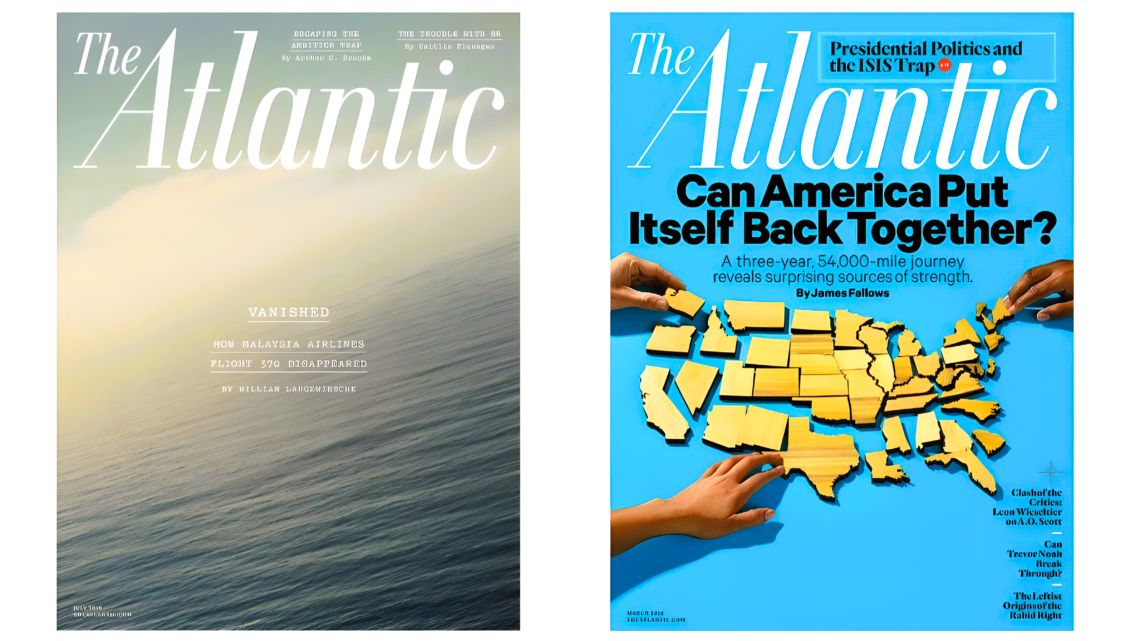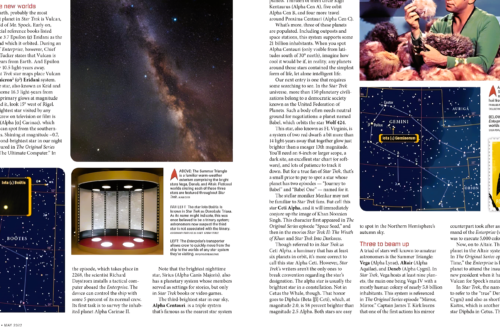
The Atlantic Long-form Journalism
In today’s fast-paced digital world, where readers often skim articles for quick information, long-form journalism has managed to maintain its relevance. Among the leaders in this domain, The Atlantic stands out with its compelling, in-depth stories that provide much more than the typical surface-level news. But what makes The Atlantic’s long-form journalism so captivating? How does it keep readers hooked from the very first word to the last? Let’s explore the world of long-form storytelling, its unique style, the impact of The Atlantic’s journalism, and what you can learn from this powerhouse of literary reporting.
What is Long-form Journalism?
Long-form journalism refers to articles that are significantly longer than typical news reports or blog posts, often exceeding 2,000 words. These pieces are crafted to dive deep into a specific subject, providing readers with not only the essential facts but also offering rich, nuanced perspectives. This format goes beyond surface-level reporting, aiming to give a comprehensive understanding of the topic at hand. Writers often spend a great deal of time researching, gathering expert opinions, and exploring multiple viewpoints to present a well-rounded story.
The goal of long-form journalism is to immerse the reader in the subject matter, making them feel like they’re part of the story rather than just observers. It challenges the traditional fast-paced news cycle by offering a more contemplative reading experience, where the reader can digest information at their own pace. This form of journalism invites readers to explore topics more thoroughly, often unveiling intricate details and complex arguments that wouldn’t fit into a short news report.
One of the main appeals of long-form content is its ability to provide comprehensive coverage. Unlike short news articles, which often focus on just the key points, long-form pieces delve into all aspects of a story, uncovering layers of detail that may otherwise be overlooked. This type of journalism offers readers the opportunity to understand an issue in its entirety, often from multiple angles, and see the broader context that surrounds it. It’s perfect for subjects that require more than just a quick update, such as in-depth political analysis, human interest stories, or investigative pieces.
In today’s world, where many people are used to consuming short, bite-sized content on social media, long-form journalism provides a refreshing alternative. Instead of rushing through a few paragraphs of surface-level information, long-form articles invite readers to slow down and fully engage with the material. They evoke emotions, spark thoughtful reflections, and give readers a sense of connection to the story. Moreover, long-form journalism often has a timeless quality to it; while news stories may fade away after a few days, these articles remain relevant and thought-provoking for much longer, continuing to resonate with readers long after they are first published.
The Legacy of The Atlantic in Long-form Journalism
- Foundation and Historical Impact: Founded in 1857, The Atlantic quickly established itself as a leading publication in the realm of long-form journalism. Over the years, it has earned a reputation for being at the forefront of high-quality, thought-provoking reporting. Its impact has extended across generations of readers, shaping public opinion and offering insightful commentary on key issues of the time.
- Commitment to In-Depth Reporting: The Atlantic has consistently prioritized comprehensive, well-researched journalism that dives deep into complex subjects. From politics to culture, science to technology, its articles offer thorough analysis and multiple viewpoints, providing readers with a fuller understanding of the topics discussed. The magazine’s commitment to long-form journalism has played a significant role in shaping the way readers engage with in-depth stories.
- Notable Contributors and Writers: Over the years, The Atlantic has been home to some of the most celebrated writers and journalists, many of whom have shaped the direction of long-form journalism. Writers like Ta-Nehisi Coates, James Fallows, and Pico Iyer have contributed influential essays and articles, tackling a wide range of societal issues. These writers have brought a unique voice and perspective to the magazine, further cementing its legacy in the world of high-quality journalism.
- Pioneering Investigative Journalism: The Atlantic has consistently been a platform for groundbreaking investigative journalism. The magazine has addressed important topics such as civil rights, immigration, and social justice, with many of its articles having a lasting impact on public discourse. Through its long-form pieces, The Atlantic has pushed the boundaries of traditional journalism, encouraging readers to think critically about the world around them.
- Cultural Influence and Social Relevance: The magazine has not only informed but also influenced the cultural and social conversations of its time. By tackling relevant and sometimes controversial topics, The Atlantic has sparked discussions that extend far beyond the pages of the magazine. Its long-form journalism has been a catalyst for change, challenging societal norms and encouraging readers to engage with important issues on a deeper level.
Key Features of The Atlantic’s Long-form Journalism
| Feature | Description | Benefit | Example | Why It Matters |
| Narrative Style | The Atlantic often uses storytelling techniques that integrate personal anecdotes, historical context, and vivid character profiles. | Creates a compelling narrative that immerses readers in the story. | Articles often explore complex social or political issues with a personal angle. | Makes complex topics relatable and emotionally engaging. |
| Investigative Depth | The Atlantic takes a methodical approach to investigating important topics, uncovering hidden details and complexities. | Provides readers with thorough, nuanced understanding of the issue. | In-depth investigations into political corruption or societal inequalities. | Encourages critical thinking and fosters a deeper understanding of issues. |
| Expert Analysis | Articles often feature insights from thought leaders, industry experts, and scholars, lending authority to the content. | Enhances credibility and provides informed perspectives on complex topics. | Pieces on economic policies often feature economists or political scientists. | Bolsters trust and authority, guiding readers through difficult subjects. |
| Engaging and Accessible Language | Despite the complexity of the topics, The Atlantic’s language remains clear, accessible, and engaging for a wide audience. | Makes high-level content accessible to readers from all backgrounds. | Articles on global issues are written in a way that is approachable without oversimplifying. | Ensures that long-form journalism remains engaging for all readers. |
| Timeless Relevance | The Atlantic’s long-form pieces are often evergreen, offering insights that remain relevant for months or even years. | Provides lasting value for readers beyond the immediate news cycle. | A well-researched feature on climate change remains pertinent years after publication. | Keeps readers informed on issues with lasting social, political, or cultural relevance. |
Some Examples of Atlantic’s Iconic Long-form Journalism
One of the most notable pieces from The Atlantic is “The Case for Reparations” by Ta-Nehisi Coates, published in 2014. In this groundbreaking article, Coates delves deep into the history of racial injustice in America and advocates for reparations for African Americans. Drawing from personal stories, historical analysis, and empirical research, Coates crafts a compelling argument that pushes the conversation on reparations into the national spotlight. This piece not only educates readers on the enduring legacy of racial inequality but also challenges them to confront uncomfortable truths about American history.
Another iconic piece is “The End of the End of History” by James Fallows. In this article, Fallows takes on the idea that democracy is the ultimate and final form of governance. Offering a sobering and reflective analysis of global politics, Fallows examines the evolution of political systems and presents a nuanced view of where democracy stands in the modern world. The piece provides readers with deep insights into global political trends, making it an unforgettable read that challenges conventional wisdom and encourages a more critical look at political ideologies.
Michael Pollan’s “The Hidden Cost of America’s Cheap Food”, published in 2002, explores the hidden social, economic, and environmental costs of industrial agriculture in the United States. In this article, Pollan examines the price that society pays for cheap food, taking into account issues such as worker exploitation, environmental degradation, and health risks. The Atlantic’s ability to tackle such a complex and multifaceted issue is evident in this piece, as Pollan provides a well-rounded and thought-provoking view of the food industry. This article highlights how The Atlantic can address pressing issues by examining them from multiple angles, encouraging readers to think critically about the costs of convenience.
These examples demonstrate The Atlantic’s strength in producing long-form journalism that goes beyond surface-level reporting. Through the use of detailed research, expert insights, and compelling narratives, these pieces have not only informed but also sparked national conversations on crucial issues such as racial justice, democracy, and the food industry.
The Art of Writing Long-form Journalism
- Research Extensively: Writing a long-form piece requires thorough research. Writers invest significant time — sometimes even months — gathering information, conducting interviews, and verifying facts. This research forms the backbone of a well-informed and credible story, allowing the writer to provide depth and accuracy in their reporting.
- Master the Narrative: Unlike traditional news reporting, long-form journalism often centers around storytelling. Writers must craft their articles with narrative techniques that keep the reader engaged. The structure should evoke the flow of a story, with elements of tension, conflict, and resolution that pull readers in, much like a well-written novel.
- Balance Objectivity and Emotion: Long-form pieces must strike a delicate balance between presenting hard facts and connecting with readers on an emotional level. While objective data and statistics are essential, personal stories, human experiences, and emotional appeals often serve as the heart of the article, making complex topics relatable and memorable.
- Create Structure: A key aspect of long-form journalism is its structure. Writers must carefully organize their pieces to ensure readability and flow. This includes using clear headings, subheadings, and breaking up large chunks of text into digestible paragraphs. A well-structured article guides the reader through the narrative arc and helps maintain their attention over the course of the piece.
The Atlantic’s Role in Shaping Modern Journalism
| Aspect | Description | Benefit | Example | Why It Matters |
| Digital Transformation | The Atlantic has embraced digital platforms to expand its reach, making long-form journalism accessible to a wider audience. | Allows The Atlantic to maintain its editorial standards while reaching global readers. | Offering exclusive digital content for subscribers and leveraging online platforms for global access. | Ensures long-form journalism remains relevant in the digital era. |
| Digital Subscription Models | To maintain financial sustainability, The Atlantic offers exclusive content for subscribers, making long-form pieces profitable. | Ensures the continuation of high-quality journalism while supporting the business model. | Subscription-only features or early access to exclusive long-form articles. | Helps fund and support investigative and high-quality long-form journalism. |
| Multimedia Integration | The Atlantic enhances its long-form pieces by integrating videos, podcasts, and interactive graphics, adding more layers to the story. | Improves engagement and makes content more dynamic and accessible across different formats. | A long-form article on climate change paired with a related podcast and interactive infographics. | Makes complex topics easier to understand and more engaging for readers. |
| Global Reach | By publishing online, The Atlantic can share its journalism with an international audience, providing global access to important stories. | Expands the publication’s impact and reach beyond traditional print readership. | Articles are accessible to anyone, anywhere, via digital platforms. | Ensures the importance of long-form journalism reaches a diverse, worldwide audience. |
| Adaptation to Changing Reader Preferences | The Atlantic has adapted to changing reader habits by implementing strategies such as breaking up long-form articles into series, sending tailored newsletters, and integrating podcasts. | Keeps readers engaged with the content in the way that suits their preferences and habits. | Series of articles on political trends delivered through email newsletters and complemented by a podcast discussion. | Keeps The Atlantic’s long-form journalism fresh and accessible, catering to modern consumption habits. |
The Future of Long-form Journalism
As the digital landscape evolves, many wonder what the future holds for long-form journalism. With the rapid rise of short-form, attention-grabbing content on social media platforms, there’s a question of whether long-form journalism can continue to thrive. The answer, however, is a resounding yes. Long-form journalism isn’t just surviving; it’s adapting, evolving, and even finding new ways to remain relevant in today’s fast-paced world.
First and foremost, readers still crave depth. In a world that is often dominated by soundbites and sensational headlines, there is a growing desire for meaningful, nuanced discussions. Long-form journalism continues to fill this need by offering well-rounded perspectives, in-depth analysis, and thoughtful commentary. While short-form content might be easier to consume in the moment, long-form articles provide a sense of satisfaction that comes from exploring a subject deeply and thoroughly.
Moreover, impactful storytelling will continue to be a key feature of long-form journalism. Publications like The Atlantic have shown that in-depth, well-researched stories can shape public opinion, provoke thought, and spark important conversations on pressing social, political, and cultural issues. These long-form pieces often provide the context necessary to understand complex topics, which is increasingly vital in an age of misinformation and oversimplification.
Finally, as technology progresses, so too will the ways in which long-form journalism is presented. Innovations in multimedia, such as interactive graphics, video integration, and immersive experiences, will become more commonplace. These advancements will not only enhance the storytelling process but will also offer readers more engaging and dynamic ways to consume long-form content. With these innovations, long-form journalism has the potential to evolve in exciting new directions, ensuring that it remains a vital and relevant part of the media landscape.





